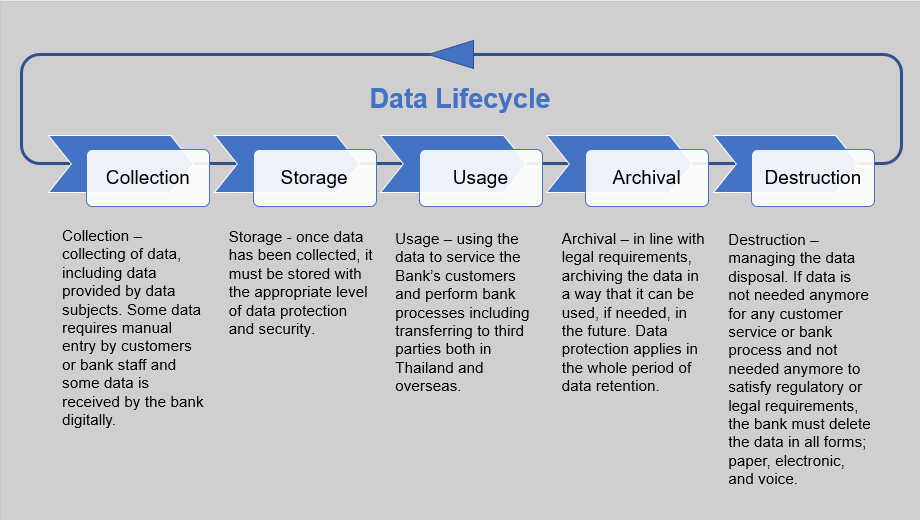The Crucial Nature of Data Destruction in Upholding Computer System Security Solutions and Protecting Versus Unauthorized Gain Access To
In a period where data violations and identity theft are significantly common, the significance of effective information damage can not be overemphasized. Organizations should acknowledge that the failing to effectively dispose of delicate details positions not only lawful and monetary risks however additionally a potential disintegration of customer count on. Numerous approaches, from information cleaning to physical devastation, act as vital safeguards against unapproved access. Understanding the ramifications of data destruction methods and compliance with laws increases necessary inquiries regarding the adequacy of existing strategies and their lasting practicality in the face of developing threats.
Relevance of Data Devastation
In an increasingly electronic globe, the significance of data destruction can not be overstated. As companies collect large amounts of delicate info, the potential effects of failing to correctly dispose and handle of that data end up being significantly extreme. Information breaches, identification burglary, and corporate espionage present significant risks, highlighting the necessity of efficient information damage methods.

Additionally, as innovation evolves, so also do the techniques through which harmful stars look for to exploit delicate information. Organizations has to stay alert and aggressive in their information destruction approaches to protect versus these developing hazards. By prioritizing data devastation, companies not only shield their possessions but also foster count on amongst stakeholders and clients, showing a dedication to accountable information monitoring and safety and security techniques.
Methods of Effective Data Damage
To make certain the total and irreversible devastation of sensitive information, companies can utilize a selection of effective approaches customized to their certain demands. Among the most typical techniques is data cleaning, which involves using specialized software application to overwrite existing information multiple times, making recovery essentially difficult. This is specifically helpful for solid-state drives and difficult drives, where standard removal techniques are inadequate.
Another effective approach is degaussing, which uses strong magnetic fields to disrupt the magnetic domains on storage space media, providing the information irretrievable. This approach is specifically matched for magnetic storage space gadgets, such as tape drives and hard drives.
Physical damage is likewise a feasible option, involving the shredding, crushing, or incineration of storage space gadgets. This technique warranties that information can not be recuperated, making it suitable for companies handling very delicate information.

Compliance With Data Security Laws
Organizations must not just focus on efficient information devastation approaches however also guarantee conformity with data defense guidelines that govern exactly how delicate information is handled and dealt with. Complying with these laws is crucial for guarding personal data and maintaining client trust fund. Laws such as the General check out this site Data Security Guideline (GDPR) in the European Union and the Medical Insurance Portability and Liability Act (HIPAA) in the USA impose rigorous guidelines on information management, that include requirements for the secure disposal of sensitive details.
To achieve compliance, companies have to carry out extensive information devastation plans that align with these legal structures. This includes recognizing information that needs devastation, developing procedures for safe here are the findings methodsâEUR" such as shredding physical media or utilizing software application that meets sector requirements for information wipingâEUR" and preserving comprehensive records of devastation activities. Normal audits must be conducted to guarantee adherence to these policies and to identify any kind of possible areas for renovation.
Failure to abide by information security laws can bring about significant legal ramifications, including large fines and damages to an organization's track record. Incorporating conformity right into information devastation practices is not just a lawful obligation however also a critical element of a durable information security method.
Consequences of Poor Data Handling
Poor information handling can lead to severe repercussions that extend beyond instant functional troubles. Organizations might encounter significant monetary losses as a result of information violations, which often result in costly remediation initiatives, lawful charges, and governing penalties. These monetary ramifications can strain sources and hinder growth, ultimately affecting an organization's bottom line.
Additionally, bad data handling can significantly harm an organization's reputation. Stakeholders, customers, and companions may lose count on in an entity that falls short to protect sensitive information, leading to reduced customer commitment and potential loss of organization possibilities. This disintegration of count on can take years to restore, if it can be brought back at all.
Furthermore, organizations can encounter lawful ramifications arising from non-compliance with data protection regulations. Such offenses may lead to penalties and investigations, compounding the economic burden and further tainting the company's photo.
In the realm of cybersecurity, poor information monitoring practices can develop susceptabilities that make systems a lot more susceptible to unauthorized access and cyberattacks. Eventually, these consequences emphasize the crucial value of implementing robust data managing procedures to secure delicate information and maintain organizational honesty.
Ideal Practices for Secure Information Disposal


Firstly, information should be categorized according to its level of sensitivity. Delicate information requires more strenuous disposal approaches, such as shredding physical files and utilizing sophisticated software for electronic information wiping. Employing certified information devastation services ensures conformity with market guidelines and standards.
Second of all, companies must carry out an information disposal plan that mandates normal audits. This policy must lay out the treatments for data retention and destruction, making certain that out-of-date data is thrown away without delay and securely. Educating staff members on these procedures is important to cultivating a culture of security understanding.
Lastly, maintaining detailed records of disposed information enhances accountability and provides a clear audit path. This documents should consist of the kind of information ruined, the technique used, and the date of disposal.
Verdict
Finally, the important of reliable information destruction is obvious in its function in improving computer system protection solutions and mitigating unapproved access risks. Adopting durable methods such as data cleaning, degaussing, and physical destruction, along with compliance with laws like GDPR and HIPAA, is necessary for securing sensitive details. Ignoring appropriate data disposal practices can bring about extreme effects, consisting of information breaches and lawful consequences. Executing finest practices in secure information disposal ultimately strengthens organizational integrity and client trust.
In a period where data breaches and identity burglary are significantly widespread, the value of reliable data devastation can not be overemphasized. data destruction. Information violations, identity theft, and business espionage present considerable threats, emphasizing the requirement of efficient information damage techniques
Compliance with regulations such as GDPR and HIPAA mandates that companies carry out rigorous information protection procedures, consisting of the protected destruction of data at the end of its lifecycle.
By focusing on information damage, firms not just safeguard their possessions but also foster depend on amongst customers and stakeholders, demonstrating a dedication to responsible information monitoring and safety and security practices.
Organizations have to not just concentrate on efficient data destruction methods but also guarantee compliance with data security guidelines that control just how delicate info is managed and disposed of.